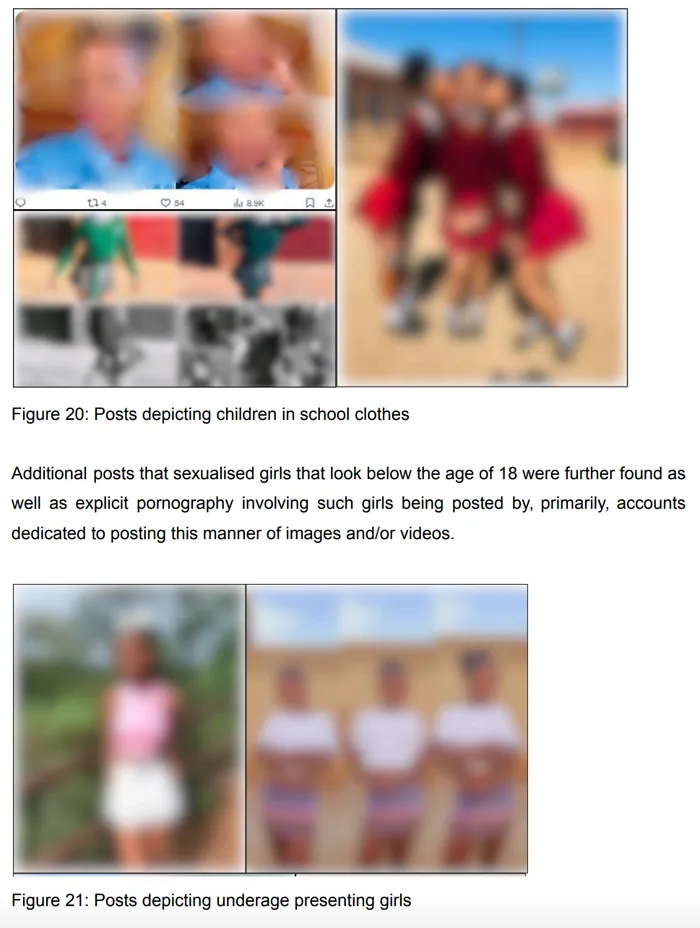Why you should be worried about online predatory behaviour towards minors

Tools and strategies to safeguard minors online.
Image: Supplied
The Centre for Analytics and Behavioural Change (CABC) has released a concerning report titled “After 12 is Lunch,” which highlights alarming trends in child sexual exploitation, teenage pregnancy, and the normalisation of predatory behaviour towards minors on social media. Covering the period from 1 June 2024 to 31 May 2025, the report reveals how child predation is perpetuated, rationalised, and endorsed online, prompting significant concern.
Some of the report’s key findings have shown that there is weak accountability when it comes to rampant teenage pregnancy, and that some social media users openly supported relationships between adult men and minor girls.
“Over 7,600 pregnancies among girls aged 10 to 14 were reported in eThekwini alone, with the youngest mother was just 10 years old. Many users blamed societal failure and called for automatic statutory rape investigations in all such cases. Alarmingly, others blamed the minors themselves or justified the relationships for financial reasons,” the report said.
“Phrases like ‘after 12 is lunch’ and cultural arguments were used to excuse or normalise exploitation. A church was also flagged for condoning a marriage between a 55-year-old man and an 18-year-old woman. The marriage is legal, but heavily criticised on ethical grounds.”
It also mentioned how a handful of accounts on X, formerly Twitter, were responsible for posting and sharing sexually explicit content involving underage children, especially girls in school uniforms.
“While these posts often received little engagement, they accumulated high view counts, suggesting silent consumption by many users.

The report, “After 12 is Lunch”, covers the period from 1 June 2024 to 31 May 2025, and exposes how child predation is perpetuated, rationalised, and endorsed online.
Image: Pexels / Supplied
It also mentioned how a handful of accounts on X, formerly Twitter, were responsible for posting and sharing sexually explicit content involving underage children, especially girls in school uniforms.
“While these posts often received little engagement, they accumulated high view counts, suggesting silent consumption by many users.
“Finally, in our exploration of Child Sexual Abuse Material (CSAM) online, we found widespread perpetuation of images/videos of school children and underage presenting females with attendant captions indicating either their age or a rough estimation thereof.
“Several accounts based in South Africa are stylised around this type of content and post solely images or videos of young females. Their consistent posting, as well as the number of accounts engaging in perpetuating such content, suggests that they do have an audience despite getting minimal engagement on their posts.
Spokesperson for anti-gender-based violence organisation Ilitha Labantu, Siyabulela Monakali, said the findings are deeply concerning and expose troubling narratives and trends.
“Our work supporting survivors and vulnerable children makes clear that these online dangers are part of a broader, persistent pattern of exploitation. The online space has made it easier for perpetrators to target children by enabling anonymity, wider reach, and continuous contact.
“The report’s findings confirm this, highlighting the urgent need for greater awareness, education, and enforcement. It confirms what we see in our work: that exploitation is not only persistent but also evolving in how it presents online,” Monakali said.
“While child exploitation is not new, the online environment amplifies risks. Children are often caregivers often lack clear information about online grooming, which leaves children vulnerable.
“Combating this requires a holistic approach. Education on digital literacy and online safety must be prioritised for children, parents, and educators alike. Law enforcement agencies need more training and resources to track and prosecute online offences effectively.
“The recent court order compelling Meta to unmask users posting sexual content of South African schoolchildren highlights the critical need for platform accountability. Social media companies must be held responsible for monitoring and removing exploitative content promptly,” Monakali said.
Action Society spokesperson, Juanita du Preez, said the report is a chilling yet necessary exposure of the disturbing trends in South Africa’s digital landscape.
“The casual normalisation and outright celebration of child sexual exploitation on public social media platforms is not only a gross violation of our children’s rights—it is a national emergency. The fact that statutory rape, CSAM, and grooming language are being openly discussed and, in some cases, trivialised in digital discourse is a damning indictment of both law enforcement failures and our society’s growing desensitisation to abuse,” Du Preez said.
“The use of grooming language remains rampant because the platforms meant to protect users often prioritise engagement metrics over child safety. Moreover, public awareness is still lacking—many adults and even children are unaware that certain comments, DMs, or ‘jokes’ are actually predatory red flags.”
“If we cannot guarantee our children's safety online, we are failing them in the spaces they spend most of their time. At Action Society, we believe that every child deserves to grow up free from fear, exploitation, and abuse—whether offline or online.”
Forensic criminologist and director of security consulting firm Cybareti, Laurie James, has highlighted that while the report has its strengths, it does have limitations. James said that the report misses key modern psychological motivators, especially in the digital realm.
Missing or underdeveloped motivations include:
- Anonymity and Disinhibition: The online disinhibition effect (Suler, 2004) is a critical driver as predators feel shielded by anonymity, which emboldens them to express desires or act on fantasies they suppress offline. The lack of consequence (real or perceived) also lowers the threshold for engagement in CSAM, grooming, or voyeurism.
- Addiction and Escalation: CSAM users often start with “borderline” material (e.g. sexualised school uniforms) and progress toward more extreme content—a process similar to porn addiction escalation. This compulsion and tolerance cycle is not discussed.
- Sadism and Power Dynamics: Some predators are driven by the thrill of dominance and humiliation, especially in livestreamed abuse or coercive “sextortion”. There’s no mention of psychopathic traits, paraphilic disorders, or compulsive-exploitative motives, despite cases clearly indicating these.
- Moral Disengagement & Rationalisation: The report touches on cognitive distortion but misses Bandura’s model of moral disengagement, such as: minimising harm (“she’s mature for her age”), victim-blaming (“she flirted first”) euphemistic language (“just chatting,” “educating”) and diffusion of responsibility (“everyone does it online”).

Some of the report’s key findings have shown that there is weak accountability when it comes to rampant teenage pregnancy, and that some social media users openly supported relationships between adult men and minor girls.
Image: Centre for Analytics and Behavioural Change/Screenshot
James added that there is also no discussion of emerging tech tools used in predation, an absence of grooming models specific to online environments, and neglect of victim vulnerabilities.
Get your news on the go, click here to join the Cape Argus News WhatsApp channel.
Cape Argus